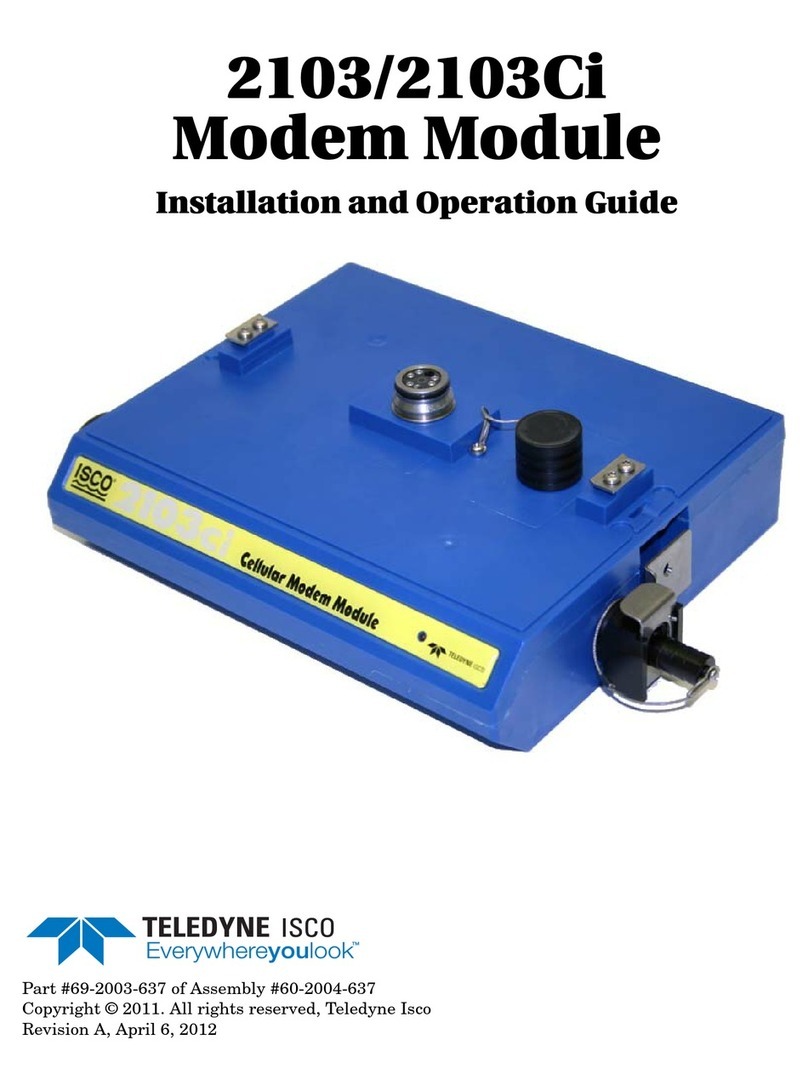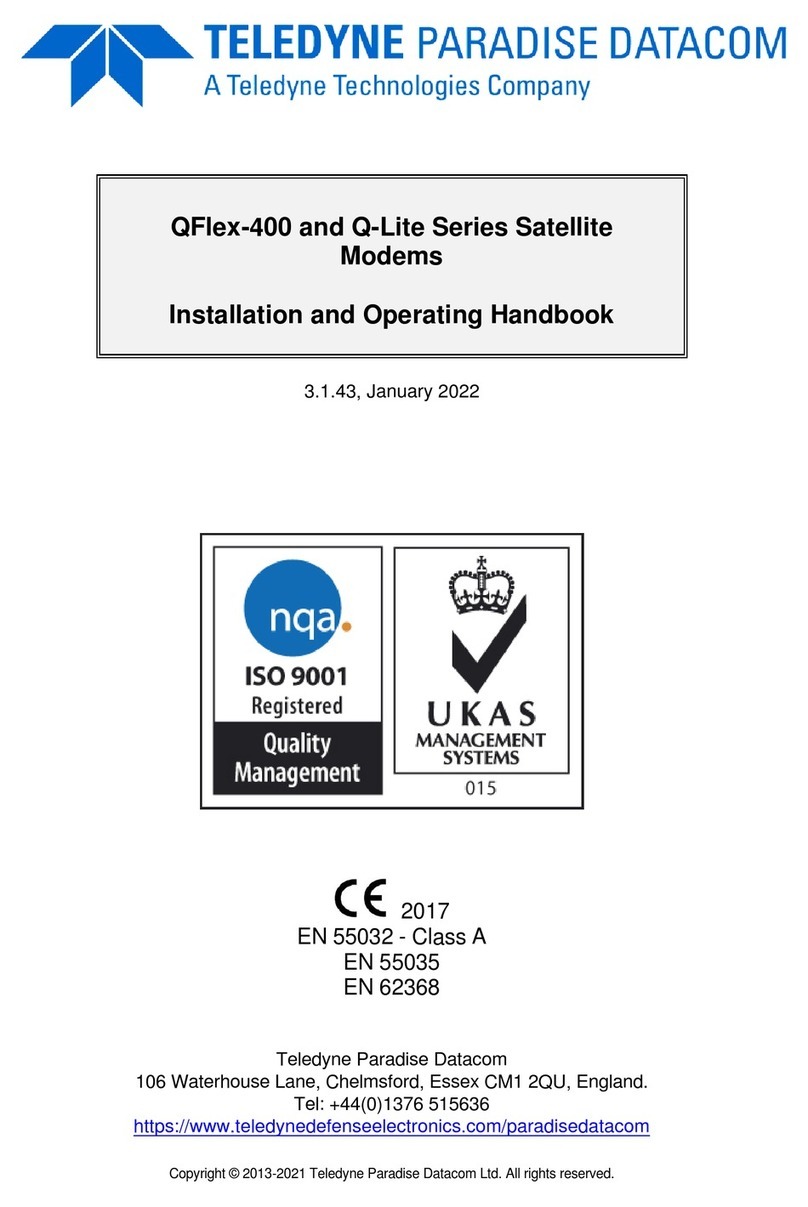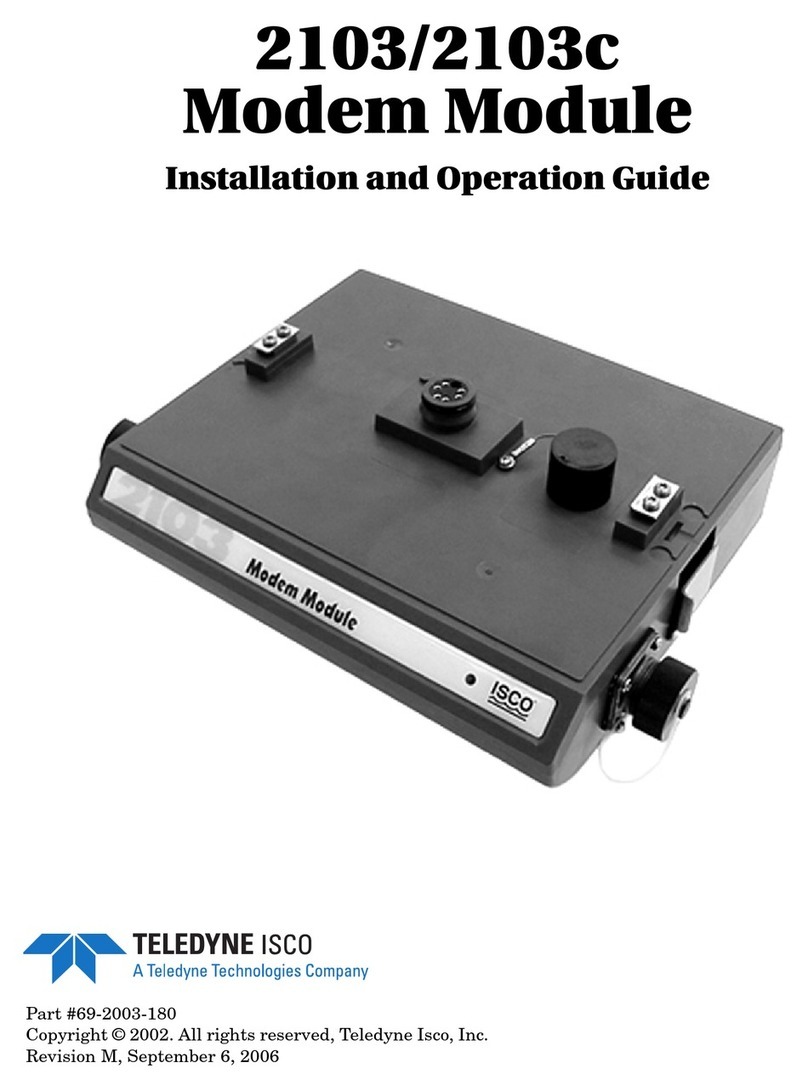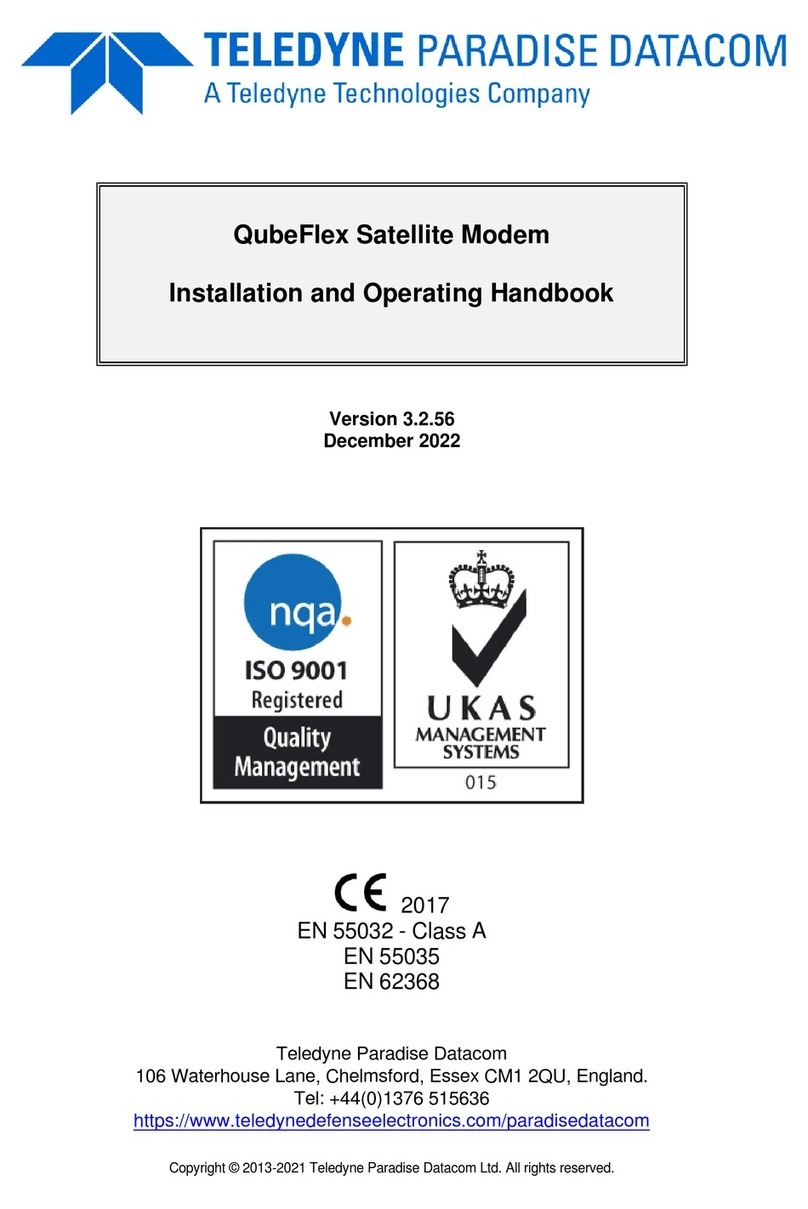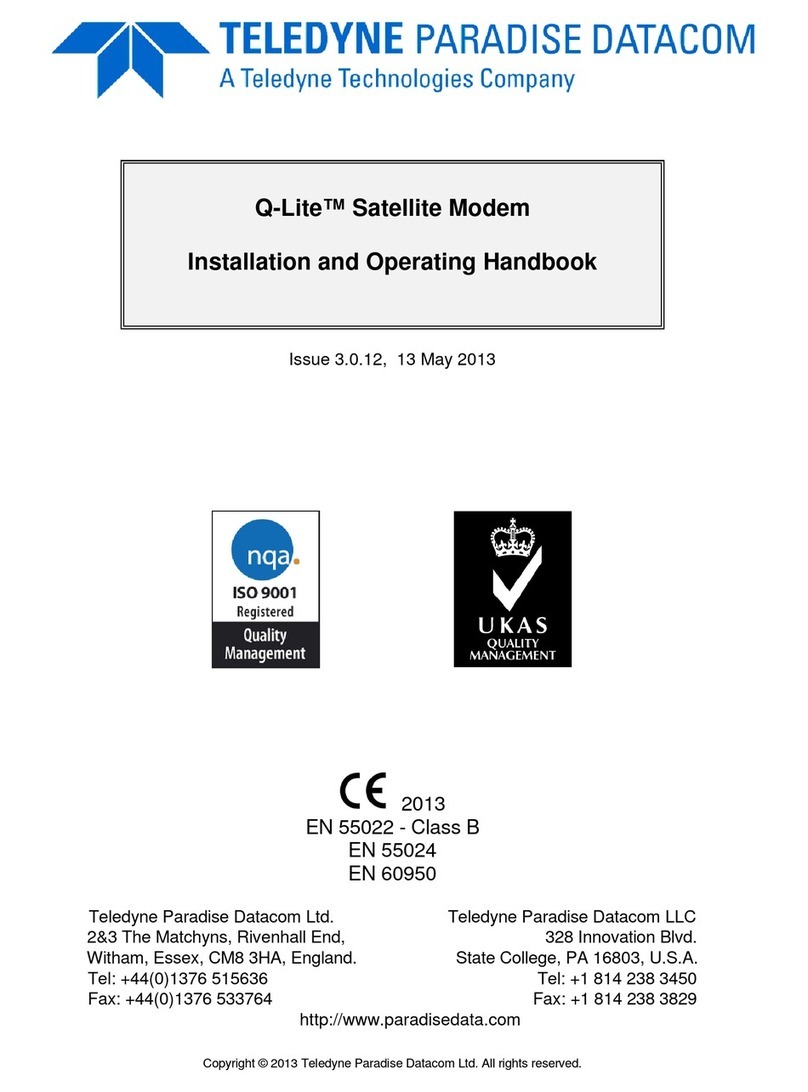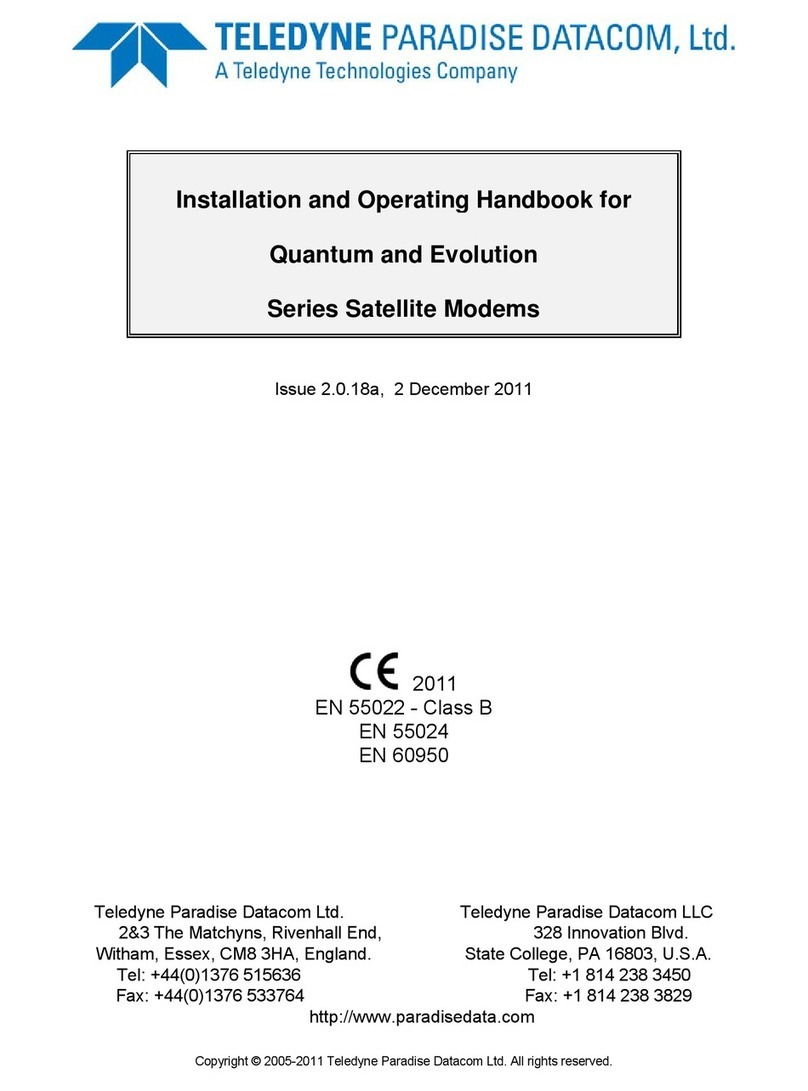Q-Flex Satellite Modem Installation and Operating Handbook
iii
6.1.2 Takeaway Mode ............................................................................................. 6-1
6.2 Web User Interface............................................................................................. 6-2
6.2.1 Login Screen .................................................................................................. 6-2
6.2.2 Status Screen ................................................................................................. 6-3
6.2.2.1 Status Setup ........................................................................................... 6-5
6.2.2.2 Status Demodulator ................................................................................ 6-6
6.2.2.3 Status Paired Carrier™ ........................................................................... 6-7
6.2.2.4 Status ACM............................................................................................. 6-7
6.2.2.5 Status AUPC........................................................................................... 6-8
6.2.2.6 Status BUC/LNB ..................................................................................... 6-8
6.2.3 Edit Screen..................................................................................................... 6-8
6.2.4 Edit->Tx-Rx->Service Screen ......................................................................... 6-9
6.2.4.1 Terrestrial Interface............................................................................... 6-10
6.2.4.2 Rx Values Track Tx............................................................................... 6-11
6.2.4.3 Tx/Rx Service........................................................................................ 6-11
6.2.4.4 Tx/Rx Rate Control................................................................................ 6-12
6.2.4.5 Tx/Rx Data Rate ................................................................................... 6-12
6.2.4.6 Tx/Rx Symbol Rate ............................................................................... 6-13
6.2.4.7 Tx Clock Source.................................................................................... 6-14
6.2.4.8 Rx Clock Source ................................................................................... 6-14
6.2.4.9 Tx/Rx FEC Type ................................................................................... 6-15
6.2.4.10 Tx/Rx Modulation .............................................................................. 6-15
6.2.4.11 Tx/Rx FEC Code Rate....................................................................... 6-15
6.2.4.12 Tx/Rx Frequency Band...................................................................... 6-17
6.2.4.13 Tx/Rx Carrier Frequency ................................................................... 6-17
6.2.4.14 Tx/Rx Spectral Roll-off ...................................................................... 6-18
6.2.4.15 Tx/Rx Spectral Inversion ................................................................... 6-19
6.2.4.16 IF/L-band Output Power .................................................................... 6-19
6.2.4.17 Modem/BUC Carrier.......................................................................... 6-20
6.2.5 Edit->Tx-Rx->Service->Advanced Screen .................................................... 6-20
6.2.5.1 DVB-S2 Tx/Rx Pilot Tones .................................................................... 6-20
6.2.5.2 DVB-S2 Tx/Rx Frame Size.................................................................... 6-21
6.2.5.3 Sweep Mode ......................................................................................... 6-21
6.2.5.4 Sweep Width......................................................................................... 6-21
6.2.5.5 Acknowledge Power Break ................................................................... 6-21
6.2.5.6 Reed-Solomon FEC Options................................................................. 6-22
6.2.1 Edit->Tx-Rx->Advanced Timeslot Screens ................................................... 6-22
6.2.2 Edit->Tx-Rx->Framing Screen ...................................................................... 6-22
6.2.3 Edit->Tx-Rx->AUPC Screen ......................................................................... 6-22
6.2.3.1 AUPC Mode.......................................................................................... 6-23
6.2.3.2 Target Remote Eb/No ........................................................................... 6-23
6.2.3.3 Maximum AUPC Power Offset .............................................................. 6-23
6.2.3.4 Maximum Negative AUPC Power Offset ............................................... 6-24
6.2.3.5 AUPC Method ....................................................................................... 6-24
6.2.3.6 Carrier Loss Action................................................................................ 6-24
6.2.3.7 Local Demod Unlocked Action .............................................................. 6-24
6.2.4 Edit->Tx-Rx->BUC/LNB Screen.................................................................... 6-25
6.2.4.1 BUC Interface ....................................................................................... 6-25
6.2.4.2 BUC LO Frequency............................................................................... 6-26
6.2.4.3 BUC Attenuation ................................................................................... 6-26
6.2.4.4 DC to BUC ............................................................................................ 6-26
6.2.4.5 10MHz to BUC ...................................................................................... 6-26
